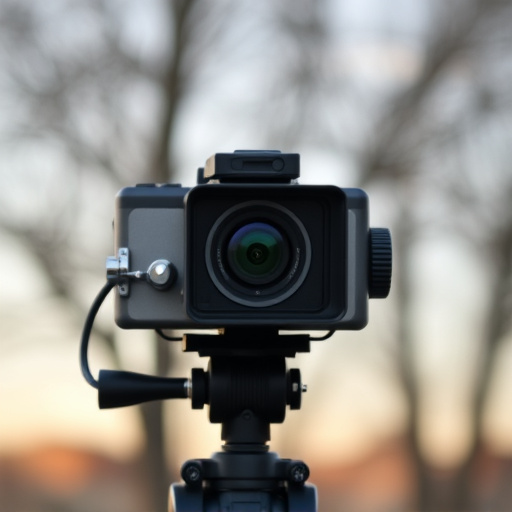Spy cameras with cloud storage revolutionize covert recording by capturing and transmitting video/audio evidence wirelessly to online accounts, enabling remote access and real-time monitoring. While enhancing convenience and flexibility, they raise privacy concerns that necessitate robust security measures to protect sensitive data. Detecting these cameras requires technical expertise and observation, with experts using network analysis and specialized tools to uncover hidden equipment. Cloud storage integration offers discretion, efficiency, and secure data transmission for spies and security professionals, minimizing the risk of data breaches or unauthorized access.
Uncover the secrets of covert recording with this comprehensive guide. From understanding advanced spy camera technology to navigating their subtle placement, we demystify these hidden devices. Discover effective techniques and tools for identifying clandestine surveillance equipment, especially in today’s digital age where cloud storage plays a pivotal role. Learn how cloud-enabled spy cameras offer discreet advantages, ensuring your awareness remains undetected while providing robust data storage.
- Understanding Covert Recording Devices: A Comprehensive Overview
- Identifying Spy Cameras: Techniques and Tools
- Cloud Storage in Covert Operations: Advantages and Discreet Use Cases
Understanding Covert Recording Devices: A Comprehensive Overview
Covert recording devices, often referred to as spy cameras with cloud storage, are small, discrete electronic gadgets designed to capture and store video or audio evidence secretly. These devices operate silently in the background, making them ideal for various purposes, from home security to professional surveillance. Understanding their capabilities and limitations is paramount when employing such technology.
Spy cameras with cloud storage offer a modern twist on covert recording by transmitting footage wirelessly to an online cloud account, ensuring remote access and real-time monitoring. This feature enhances convenience and flexibility, allowing users to review recorded content from anywhere with an internet connection. However, it also raises privacy concerns, necessitating robust security measures to protect sensitive data.
Identifying Spy Cameras: Techniques and Tools
Identifying spy cameras, often hidden and designed to be discreet, requires a combination of technical expertise and keen observation. One of the most modern techniques involves detecting devices with cloud storage capabilities. Many advanced spy cameras are now equipped with built-in cloud sync features, making it easier for users to track their location remotely. By analyzing network activity and identifying unusual data transfers, security experts can pinpoint the presence of such hidden surveillance equipment.
Specialized tools and software play a pivotal role in this process. These range from advanced network scanners that can detect unusual connections and data flows, to apps designed to scan for specific patterns indicative of spy camera activity. Additionally, physical inspections using specialized UV lights or infrared sensors can reveal hidden cameras, as these devices often leave unique visual signatures that are invisible to the naked eye.
Cloud Storage in Covert Operations: Advantages and Discreet Use Cases
In covert operations, where discretion is paramount, the integration of cloud storage offers several advantages for spies and security professionals alike. A spy camera with cloud storage capabilities allows for immediate and secure transmission of evidence without leaving physical media behind. This technology ensures that even in remote or challenging locations, operatives can capture and access critical data seamlessly. The use of cloud storage also enhances operational efficiency by streamlining the data management process, making it easier to organize, analyze, and share information among team members.
Discreet use cases for cloud storage in covert operations are vast. For instance, in surveillance missions, high-definition camera feeds can be uploaded anonymously, ensuring no trace links back to the operator. This feature is equally valuable in undercover investigations, where evidence documentation must remain confidential. Cloud storage’s decentralized nature further adds to its allure, as it minimizes the risk of data breaches or unauthorized access, making it a reliable tool for maintaining operational security and integrity.
In conclusion, this guide has equipped readers with a robust understanding of covert recording devices, from identifying spy cameras using specialized techniques and tools to exploring the advantages of cloud storage for discreet operations. By integrating these strategies, individuals can navigate the intricate world of hidden recordings, ensuring both privacy and security in today’s digital landscape, particularly when leveraging innovative solutions like spy cameras with cloud storage.
